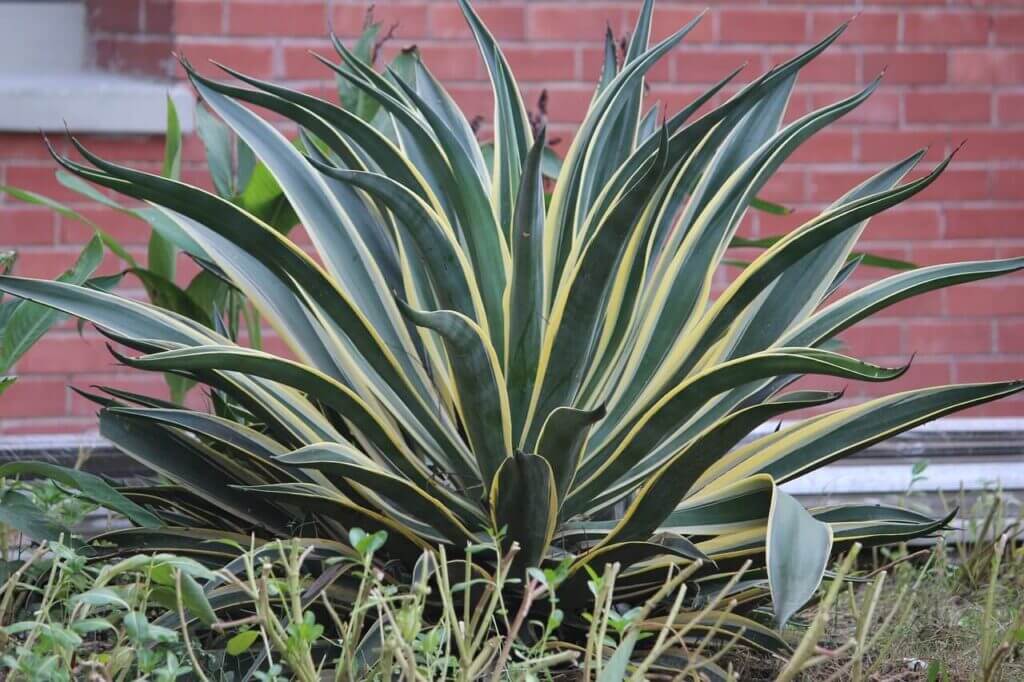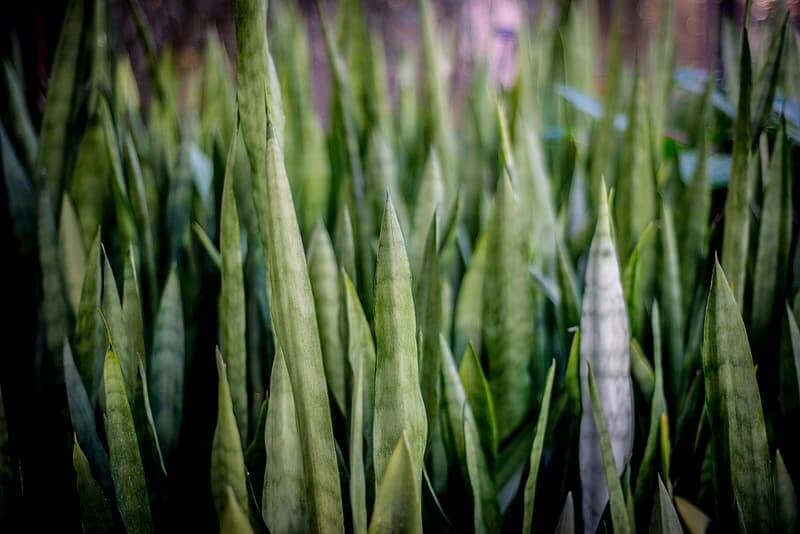Snake plant, also called mother-in-laws tongue, is a beautiful plant you can have in your garden or balcony or even indoors. It features smooth and waxy sword-shaped leaves.
The easy steps of snake plant propagation and care are what make it an amazing pick for adding to the beauty of your home’s interior.
You can even plant and gift one to your friends and family as a perfect houseplant that thrives no matter what and rises high to boast its large snake pattern leaves.
If you are looking forward to having one for your home, here’s everything you should know about snake plant propagation, Why buy one when you can plant it easily on your own! Read on.
Snake Plant Propagation
We have got you four different ways to propagate a snake plant in your home. Whether it is outdoors or indoors, these methods will help you with either location.
It is a houseplant that needs minimum care. However, do not forget to read about the quick tips we have shared at the end of the blog on snake plant care.

Snake Plant Propagation in soil
Let’s begin with the most common method, propagating snake plants by planting the leaf cuttings in soil. Also referred to as snake plant propagation in soil, it is a procedure that uses a rooting medium of a cactus-type potting mix.
To plant your houseplant in soil, follow these steps:
- Choose a healthy and thick leaf that looks vigorous and perfect. Ensure there’s no cosmetic damage.
- Cut the leaf using sterile shears from an inch above the soil.
- Measure 2-3 inches long leaf sections using a ruler before making the cut.
- Mark a dot on a point closer to the bottom end of the leaf segments with a pen to know which end to dig in the soil.
- Soon after you have got your leaf cuttings, allow it to dry out for a couple of days. When the cut edges dry properly, it minimizes the risk of rot.
- As you notice the cuttings drying out, prepare the potting soil. Get small pots containing cactus-mix, and make sure it’s damp enough for propagation.
- Emerge the ends of the dried leaf segments into the water and then into the rooting medium. This is what promotes root development.
- Now put the leaf segment in each pot (If you are planting multiple pots), just about half an inch deep.
- Place the pot in a bright place with indirect lighting.
- Keep a check on the soil every alternate day, and water it whenever it feels dry.
- Make sure the pot is not brimming with water, and empty the pot trays as soon as excess water drains out.
The only drawback with this kind of snake plant propagation is that not every cultivar results in the exact parent plant clone.
If you are planning to grow an unusual variety like ‘Golden Hahnii’, you may see the new plant losing the golden color and getting you only the Hahnii cultivar. Similarly, the ‘Moonshine’ mostly reverts to the earlier version of ‘Robusta’.
Note: Selecting damaged roots can revert root, but taking a healthier leaf will result in a healthy plant.
Snake Plant Propagation in water
Yes, you read it right! You can propagate snake plants by rooting the leaf cuttings in water. It may seem a bit risky but not impossible. Below-mentioned are the steps you must follow:
- Select a healthy snake plant leaf and cut it a little longer than in case of rooting it in the soil – around 4-5 inches of leaf segment will do.
- Leave it to dry for a couple of days.
- Now, take a tall jar or glass and put about an inch of clean water at room temperature. The jar/glass should be tall enough to support the leaf-cutting.
- Place the jar in a bright location, but not in direct sunlight.
- Put the leaf-cutting in the jar with the bottom of the cut in water.
- Replace the water in the jar twice in a day.
- To make sure the jar doesn’t get accumulated with algae, clean it once in a week.
- When you notice roots forming at the base of the leaf segment, wait for them to grow a minimum of 2 inches long.
- Now, you can transplant the young plant to a well-drained potting mix.
The one drawback of this propagation process is the risk of rot. Make sure only an inch of your leaf segment is in the liquid, and you must also protect it from pests. So, keep changing the water as suggested.

Snake Plant Propagation by Division
The third method on the list of different ways of snake plant propagation is by division. Here’s how you do it:
- Take out the snake plant from the pot or ground.
- Gently separate the soil from the rhizomes with your hands.
- Using a sharp and clean blade, separate the rhizomes.
- Pot the rhizomes in a new container having fresh soil.
- Water it s needed and wait for the plant to grow.
Note: You can divide your snake plant while potting in summer or spring. This way, you can propagate multiple snake plant pots without any risk. It is advised that you choose this method over others for propagating the unusual varieties to retain their signature characteristics, which otherwise gets lost through the leaf cuttings procedures.
Snake plant propagation by leaf cuttings
In this method, you need to divide the leaf to propagate snake plants. Follow these easy steps:
- Cut a leaf from the snake plant, and divide it into three 3-inch segments.
- Make sure to keep the original orientation of the leaf intact.
- Take a pot and fill it with sand
- Put the leaf sections vertically into the pot, not more than an inch of the leaf cuttings should be dug into the pot.
- Mark that the end of the cuttings is inserted in the pot.
- Water the pot as and when needed. Just to keep it moist all the time.
- You will notice new shoots growing in around 4-8 weeks.
Suitable growing conditions for snake plants
To make sure, you follow the above methods correctly, it is essential to understand the growing conditions of snake plants.
They can take any level of light and can manage to grow even in drought-like conditions. However, snake plants cannot take chilly winters so make sure the temperature doesn’t cross the 65-degree mark.
Snake plants don’t demand a lot of water. When planting the houseplant during summer and spring, let it dry out in between waterings. In the winter season, you can even water less – to keep the leaves from shrivelling.
Always put it in a free-draining potting mix. You can get a soilless mix from a nearby nursery or any shop selling gardening stuff.
In case you don’t get any of these in your area, you can even have a DIY potting mix by making a mixture of peat moss, sand, and perlite or vermiculite in equal proportion.
In soggy soil, you may get the plant roots to rot. We would advise you to use a terra-cotta pot or one made using any porous material. Water the plant deeply to not allow it to sit for long.

Taking care of snake plants
As mentioned above, snake plants do not need much maintenance and care, but there are a few things to know before planting this beautiful house plant, like:
- Keeping them in indirect sunlight but in a bright place. Your balcony or indoors can be the best area as they experience low-shady hours throughout the day.
- Watering the plant as and when needed. The amount of water needed is directly proportional to the light experienced by the plant. Just water it enough to keep the pot moist. More light, more water.
- Fertilizing the snake plant in every 2-3 months.
Note: You can repot the plant in any season as desired. However, they will grow perfectly in a single pot for around 3-4 years.
Quick tips for successful snake plant propagation
- Always use healthy leaves – shouldn’t be too old.
- Practice patience for the plant cuttings to root. It might even take more than a couple of months in some conditions. It is not an overnight process after all.
- Remember to plant the leaf segments from the end side and not upside-down. They won’t root when turned to the opposite direction of how they were on the original plant.
- Make a V-shaped cut on the bottom of the leaf cuttings. It expands the surface area and helps the root to grow easily. This way, you can also have a track of which side needs to be dipped in the potting mix or water.
Is snake plant propagation possible from seed? Is it reliable?
Yes, it is possible to propagate snake plants from seed, but no, it is not reliable. Of all the cultivars, most stay true to its parent plant when propagated through rhizome and root division.
Leaf cuttings are also a great way to propagate snake plants when you are okay with a slight difference in the produced plant type.
Seeds produce the earlier version of the hybrid plant, their origin – not the hybrid itself. The germination rates from seed are also not assured, or rather you could say, it’s very low.
If you are lucky enough, seeds may tend to start the growth process, but for best results cuttings or division would be the right choices.
Another reason why seeds for snake plant propagation is not a good option is that it’s expensive. Nevertheless, if you still want to give the process a try, make sure to purchase the seeds from a trusted seed supplier. The ones sold by individual sellers are not always harvested properly.
In a Nutshell
Propagating snake plants is an easy yet mindful task. You can choose from the various methods explained, such as propagation in water, soil, by leaf-cutting and by root division (rhizomes). Also, don’t forget to follow the tips we got you handy with this blog.
We hope you now have all the necessary information on snake plant propagation and are in the right mind to choose a suitable method of having your own beautiful mother-in-laws tongue. Enjoy the gardening time and do remember to come back to us for sharing your experience.
Happy Gardening!






